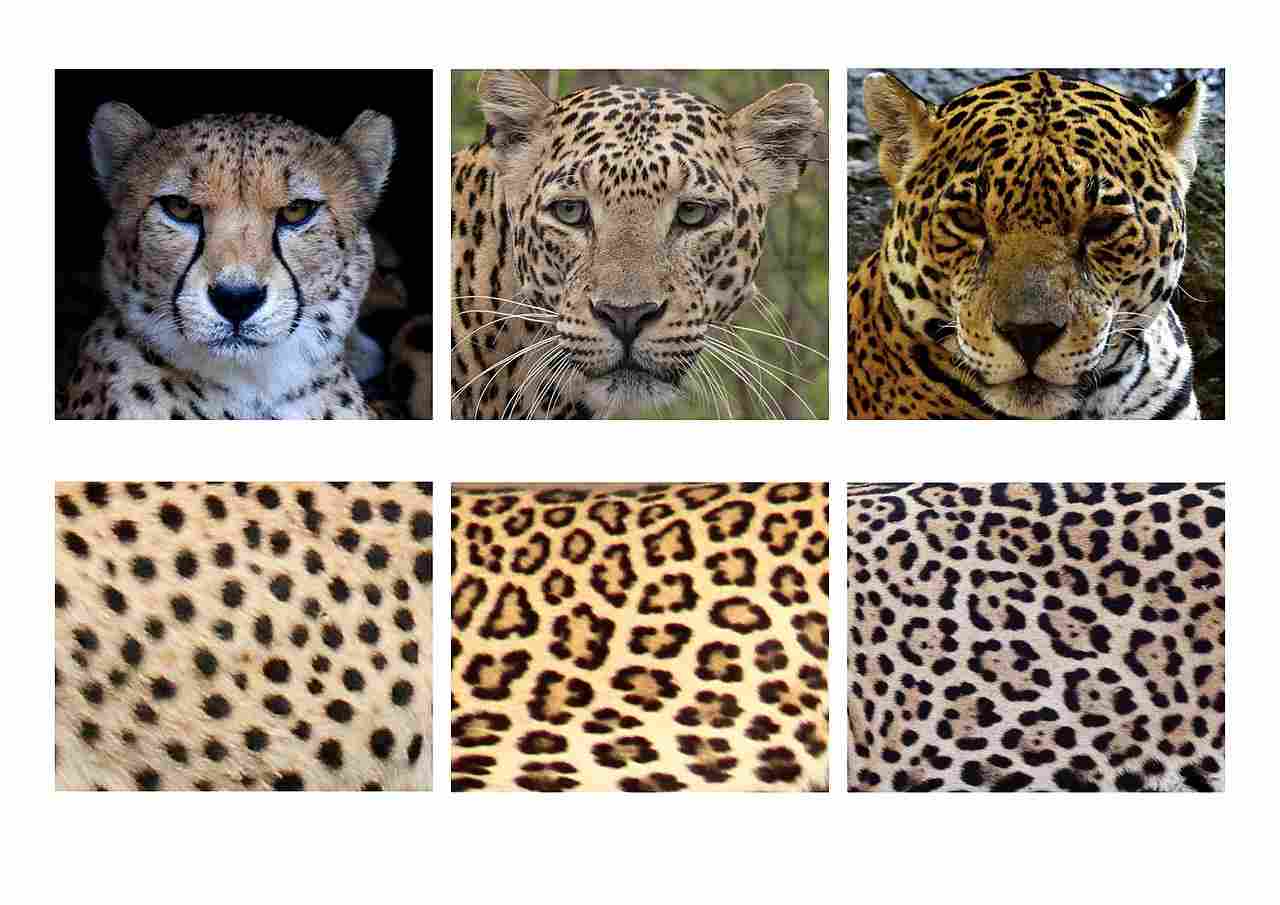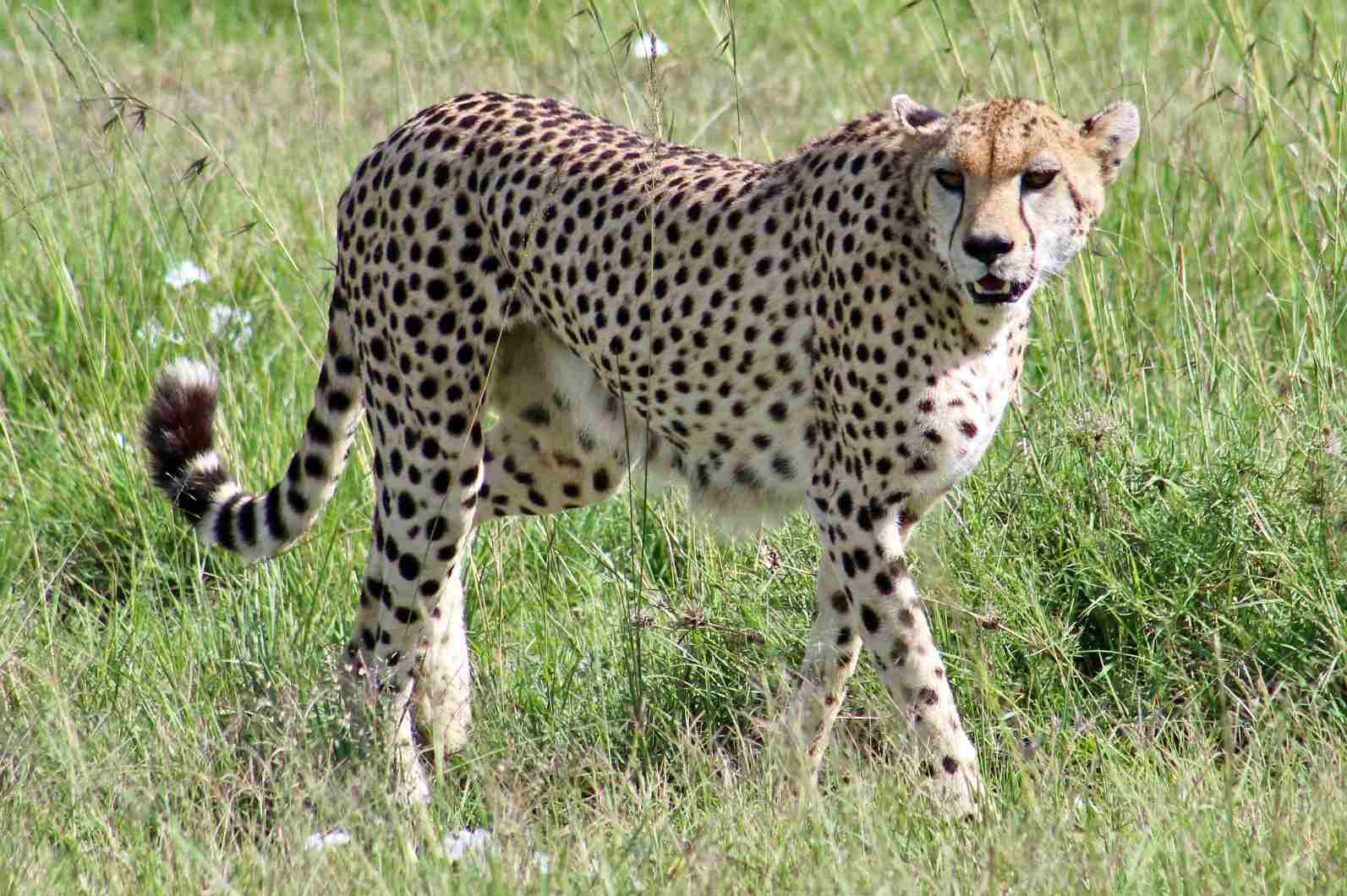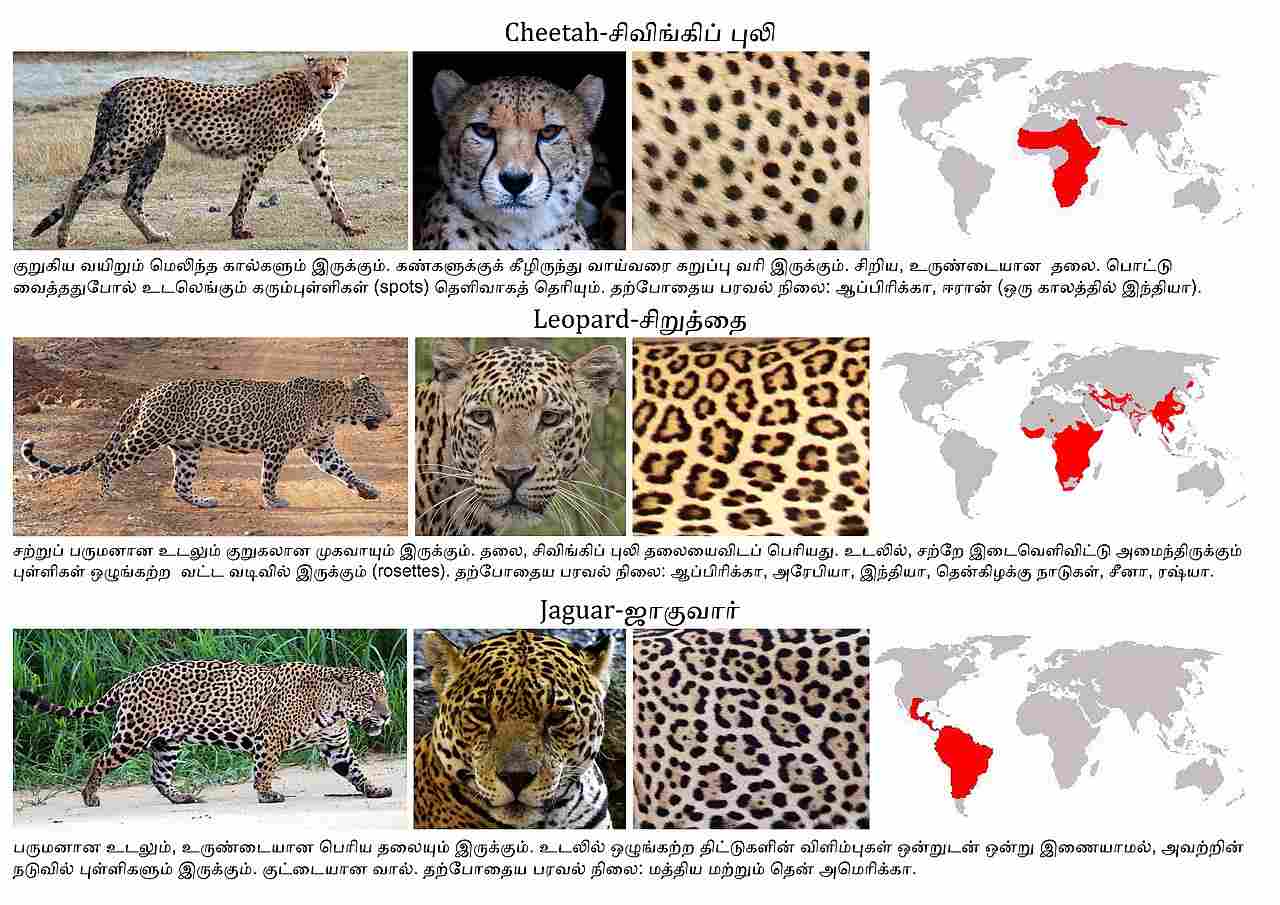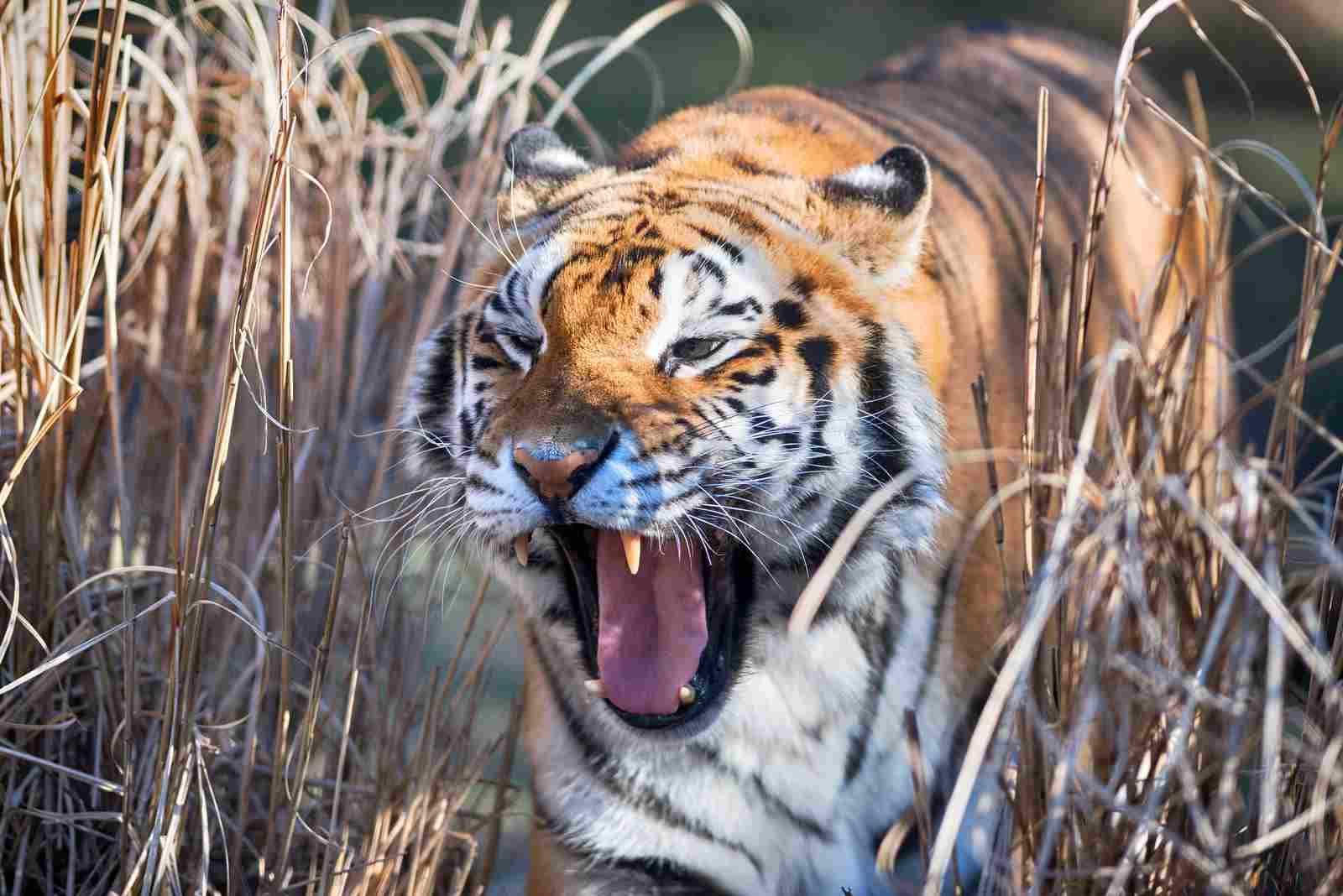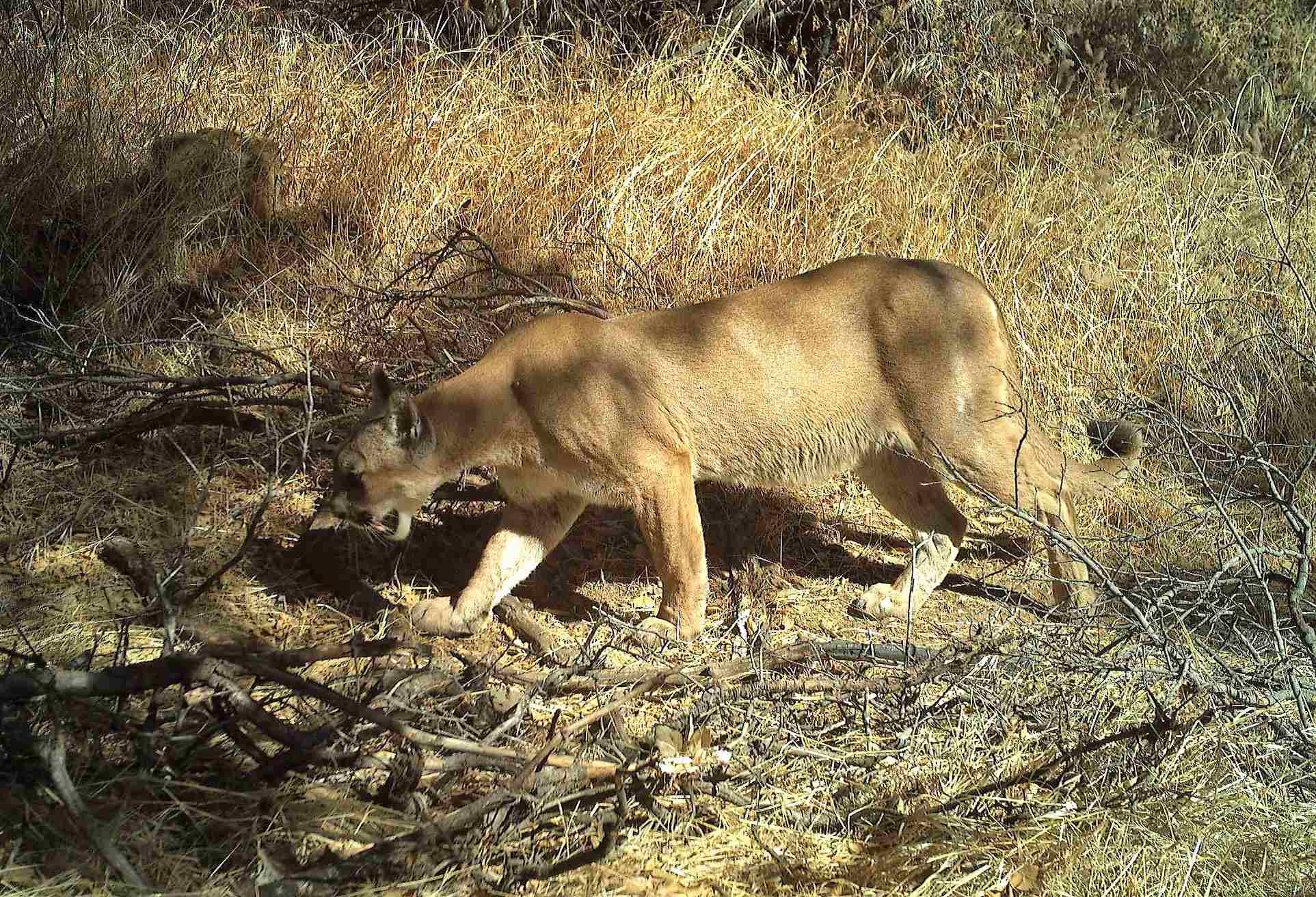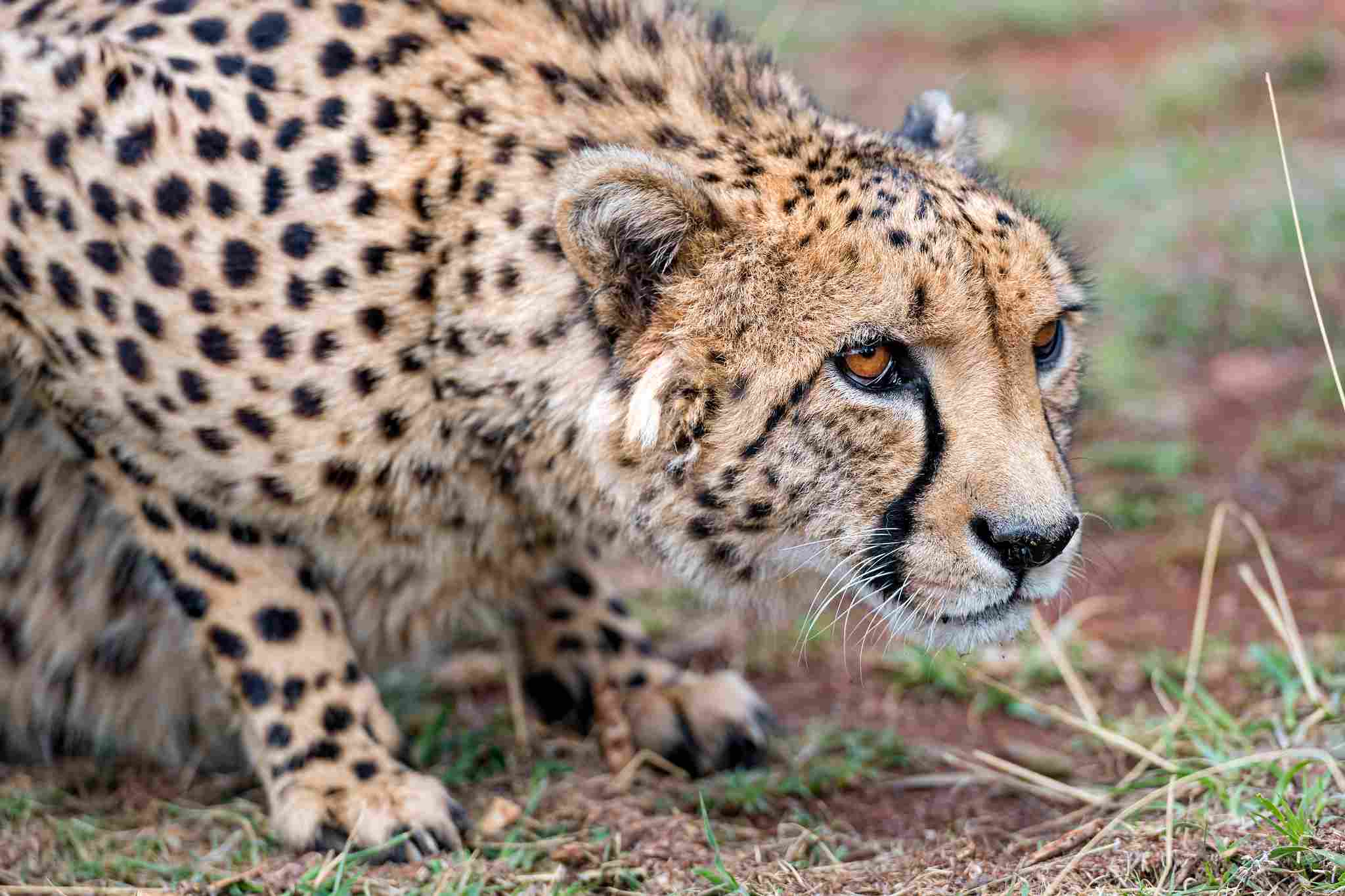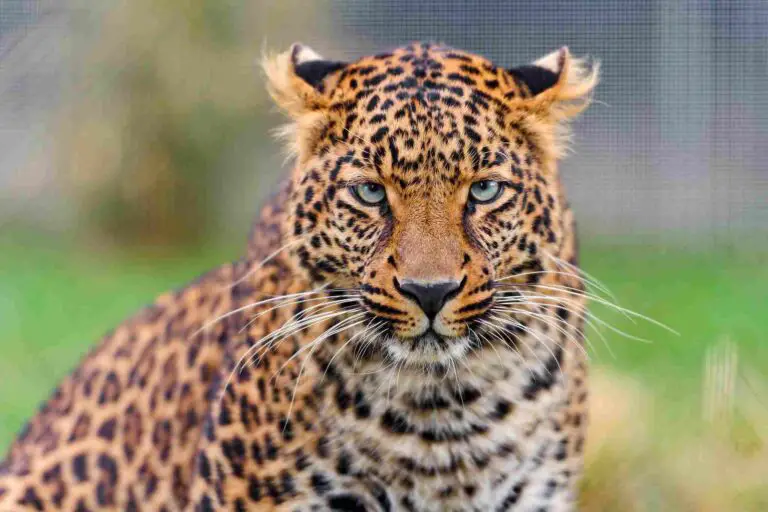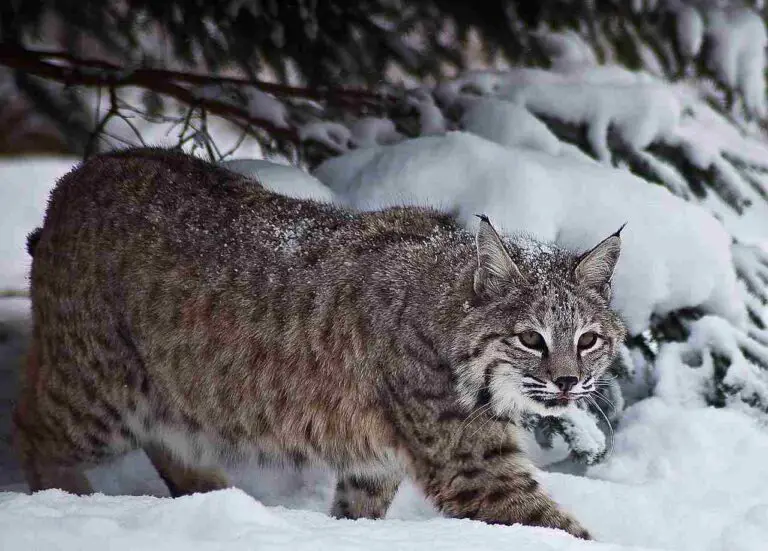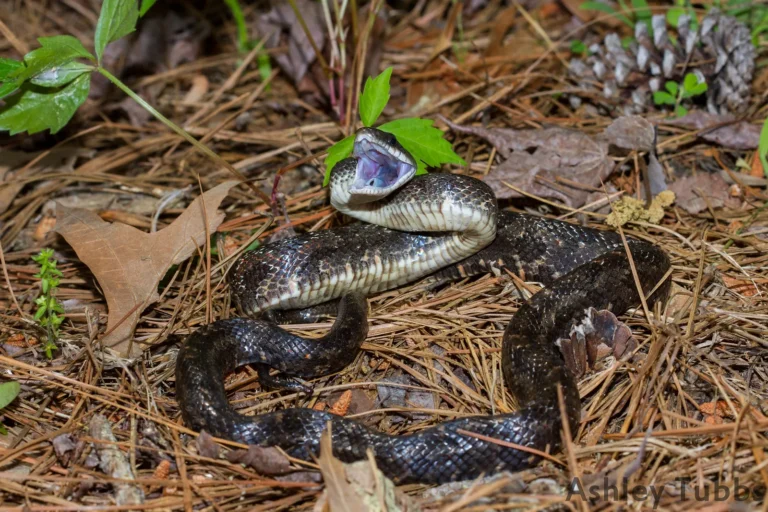King Cheetah Vs Cheetah Size, Weight, Ecological Comparison
A king cheetah will not win against a normal cheetah in a fight, as they are of the same species and have no morphological difference. The only difference is in their coat pattern, where the king cheetah has a unique pattern of spots and stripes.
Factors like size, weight, speed, and agility are used to compare them in this article. Let’s explore these aspects to understand the ecological differences between the two cheetah variants.
How a King Cheetah Differs from a Normal Cheetah
When comparing a king cheetah to a normal cheetah, there are several aspects to consider, including taxonomy, appearance, and morphology. The main difference between king cheetahs and normal cheetahs lies in their appearance.
I). Taxonomy
Both the king cheetah and the normal cheetah belong to the same species, Acinonyx jubatus. However, the king cheetah is a rare morphological variant that exhibits a unique coat pattern of spots and stripes.
II). Appearance
The most noticeable difference between the two cheetah variants is their coat pattern. While normal cheetahs have solid black spots, king cheetahs have a striking pattern of larger, irregularly shaped spots and stripes.

III). Size
In terms of size, there is no significant difference between king cheetahs and normal cheetahs. They both have a similar body structure, with a slender frame and long legs built for speed.
It is important to note that despite these differences, both king cheetahs and normal cheetahs share the same genetic makeup and ecological niche. The variations in coat pattern do not affect their overall physical capacity or behavior. In the following sections, we will address other aspects of comparison, such as weight, speed, and habitat.
*Details of Comparison
| Feature | King Cheetah | Normal Cheetah |
| Taxonomy | Same (Acinonyx jubatus) |
Same (Acinonyx jubatus)
|
| Appearance | Unique coat pattern with large, merged spots and bold stripes |
Smaller, solid spots
|
| Size | Slightly longer body (4 – 4.5 ft) |
Similar body length (3.5 – 4 ft)
|
| Weight | Similar range (100-140 lbs males, 75-110 lbs females) |
Similar range (100-140 lbs males, 75-110 lbs females)
|
| Speed and Agility | No difference, both exceptional |
No difference, both exceptional
|
| Bite Force | No difference, both powerful (475-600 psi) |
No difference, both powerful (475-600 psi)
|
| Habitat | Same (grasslands, savannas, open plains) |
Same (grasslands, savannas, open plains)
|
| Lifespan | Similar (10-12 years wild, 17+ years captivity) |
Similar (10-12 years wild, 17+ years captivity)
|
| Behavior | Solitary hunters, similar feeding, non-confrontational |
Solitary hunters, similar feeding, non-confrontational
|
| Reproduction | Similar (viviparous, 90-95 day gestation) |
Similar (viviparous, 90-95 day gestation)
|
| Danger to Humans | Generally avoids, not typically aggressive |
Generally avoids, not typically aggressive
|
| Conservation Status | Endangered (IUCN) |
Endangered (IUCN)
|
| Threats | Same (habitat loss, human-wildlife conflict, illegal trade) |
Same (habitat loss, human-wildlife conflict, illegal trade)
|
| Conservation Efforts | Same (habitat protection, anti-poaching, community engagement, awareness) |
Same (habitat protection, anti-poaching, community engagement, awareness)
|
1). Biological Attributes
The taxonomy of the King Cheetah and the normal Cheetah is an interesting aspect to explore. Both belong to the same genus, Acinonyx, and species, jubatus. However, there are some distinct differences between the two.
In terms of appearance, the King Cheetah is known for its unique coat pattern, characterized by large, blotchy spots and stripes. This is caused by a rare genetic mutation that affects the distribution of melanin in the fur. On the other hand, the normal Cheetah has a more traditional coat pattern with small, solid spots.
When comparing the two animals, it’s important to note that the King Cheetah is a rare variant of the normal Cheetah. While both share the same taxonomy, the King Cheetah’s distinct coat pattern sets it apart.
Therefore, the taxonomy of the King Cheetah and the normal Cheetah is the same, with both belonging to the genus Acinonyx and species jubatus. However, the King Cheetah’s unique coat pattern distinguishes it from its normal counterpart.

2). Appearance
The appearance of the King Cheetah and the normal Cheetah is a fascinating subject to explore. One key aspect of their appearance is their coat, fur, and skin. The King Cheetah is known for its unique coat pattern, characterized by large, blotchy spots and stripes. This distinct pattern is caused by a rare genetic mutation that affects the distribution of melanin in the fur. On the other hand, the normal Cheetah has a more traditional coat pattern with small, solid spots.
Another aspect of their appearance is their ability to camouflage. Both the King Cheetah and the normal Cheetah have evolved to blend in with their surroundings. Their coat patterns help them to hide in the grasslands and savannas where they hunt their prey.
In terms of stature and build, both cheetahs have a slender and agile body. They have a streamlined shape, with a deep chest and a long, flexible spine. This physical structure allows them to reach incredible speeds when chasing down their prey.
When comparing the appearance of the King Cheetah and the normal Cheetah, it’s clear that their coat patterns set them apart. While the normal Cheetah has a more traditional spotted coat, the King Cheetah’s unique blotchy pattern makes it easily distinguishable. However, both cheetahs share similar physical characteristics that contribute to their exceptional speed and agility.
3). Size
When comparing the size of the King Cheetah and the normal Cheetah, there are a few key measurements to consider. One of these is the total body length, which includes the head and the body. The King Cheetah typically has a slightly longer body compared to the normal Cheetah, measuring around 4 to 4.5 feet in length. On the other hand, the normal Cheetah usually has a body length of around 3.5 to 4 feet.
In terms of height at the shoulders, both cheetahs are relatively similar. The King Cheetah and the normal Cheetah both stand at an average height of around 2.5 to 3 feet at the shoulders. This height allows them to have a good vantage point when scanning their surroundings for potential prey.
When comparing the size of the King Cheetah and the normal Cheetah, it’s clear that there are slight differences in body length, but their shoulder height remains relatively consistent. These size variations may have implications for their hunting strategies and overall physical capabilities.
4). Weight
When comparing the weight of the King Cheetah and the normal Cheetah, there is no significant difference between the two. Both cheetahs have similar weight ranges, with adult males weighing between 100 to 140 pounds, and adult females weighing between 75 to 110 pounds.
The weight of a cheetah is an important factor in their hunting abilities and overall physical condition. A lighter body allows for greater speed and agility, which is crucial for chasing down prey. The cheetah’s slender build and lightweight frame enable it to reach incredible speeds of up to 70 miles per hour in short bursts.
The similarity in weight between the King Cheetah and the normal Cheetah suggests that their hunting strategies and physical capabilities are comparable. Both cheetahs rely on their speed and agility to catch their prey, utilizing their lightweight bodies to their advantage.
5). Speed and Agility
When it comes to speed and agility, there is no difference between the King Cheetah and the normal Cheetah. Both cheetahs possess remarkable speed and agility, allowing them to excel in their hunting pursuits.
Cheetahs are known for their incredible bursts of speed, reaching up to 70 miles per hour in just a few seconds. Their lightweight bodies and long, slender limbs contribute to their exceptional acceleration and top speed. This enables them to quickly close the gap between themselves and their prey, increasing their chances of a successful hunt.
In terms of agility, cheetahs are highly maneuverable. They have a flexible spine and powerful leg muscles, which allow them to make sharp turns and sudden changes in direction while in pursuit of prey. This agility is crucial for navigating through various terrains, such as grasslands and savannas, where they typically hunt.
The speed and agility of both the King Cheetah and the normal Cheetah are essential for their survival. These characteristics enable them to effectively chase down and capture their prey. Whether it’s the King Cheetah with its unique coat pattern or the normal Cheetah with its classic spotted appearance, both cheetahs rely on their impressive speed and agility to thrive in their respective habitats.
6). Bite Force
When it comes to bite force, there is no difference between the King Cheetah and the normal Cheetah. Both cheetahs possess powerful jaws capable of exerting significant pressure. The bite force of a cheetah is measured in pounds per square inch (psi), which determines their ability to capture and subdue prey.
Cheetahs have an impressive bite force, with an average psi ranging from 475 to 600. This allows them to deliver a strong bite that can immobilize their prey, particularly when targeting vital areas such as the neck or throat. Their sharp, retractable claws also aid in securing their grip on the prey during the hunting process.
The bite force of the King Cheetah and the normal Cheetah is crucial for their survival. It enables them to effectively bring down their prey and ensure a successful hunt. Whether it’s a small antelope or a larger ungulate, their powerful jaws allow them to deliver a swift and decisive bite, ensuring a quick and efficient kill.
7). Overall Physical Capacity (Which is Stronger?)
When comparing the overall physical capacity of the King Cheetah and the normal Cheetah, there is no significant difference between the two. Both cheetahs possess similar physical attributes and capabilities, aside from their distinct coat patterns.
To determine which cheetah is stronger, we have evaluated and compared various factors. These include size, weight, speed, agility, bite force, and overall hunting abilities.
In terms of size, both cheetahs have a similar body structure, with a slender and aerodynamic build that allows for swift movements. They are known for their incredible speed and agility, which enables them to chase down prey with remarkable precision.
When it comes to bite force, both the King Cheetah and the normal Cheetah possess powerful jaws capable of exerting significant pressure. Their bite force is crucial for capturing and subduing prey, ensuring a successful hunt.
In a violent confrontation between the two cheetahs, it is difficult to determine which would emerge as the stronger contender. Factors such as individual strength, experience, and strategy would play a significant role in determining the outcome.
8). Habitat
The King Cheetah and the normal Cheetah share the same habitats and can be found in similar ecosystems. Both species are native to Africa, specifically in sub-Saharan regions. They have a wide geographic range, with populations spread across countries such as Kenya, Tanzania, South Africa, and Namibia.
These cheetahs are well-adapted to various habitats, including grasslands, savannas, and open plains. These environments provide the perfect combination of open spaces for hunting and vegetation for cover. The cheetah’s slender build and excellent camouflage allow them to blend seamlessly into their surroundings, making them highly effective predators.
While both cheetahs occupy similar habitats, it’s important to note that their populations are facing different conservation challenges. The normal Cheetah, with its more common coat pattern, has a larger population size compared to the King Cheetah, which has a unique and rare coat pattern. The King Cheetah’s distinct appearance makes it more susceptible to illegal hunting and capture for the exotic pet trade.
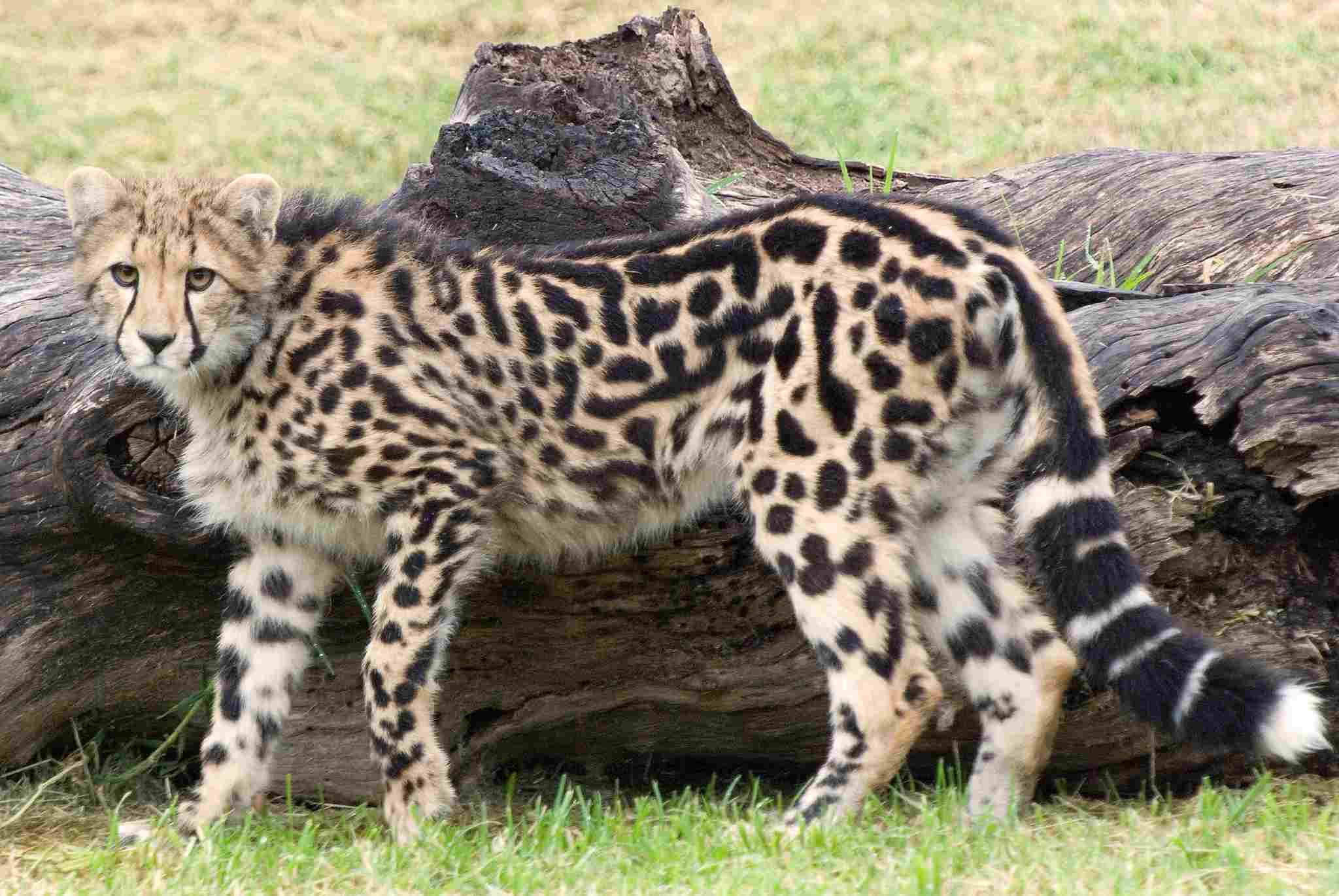
9). Lifespan
The lifespan of the King Cheetah and the normal Cheetah does not differ. In the wild, both cheetah species have an average lifespan of around 10 to 12 years. However, in captivity, they can live up to 17 years or more.
Several factors can influence the lifespan of cheetahs. Habitat plays a crucial role, as it affects the availability of prey and competition for resources. In the wild, cheetahs face challenges such as predation, diseases, and limited access to food, which can impact their overall health and longevity.
On the other hand, captive cheetahs receive regular veterinary care, a controlled diet, and protection from natural threats. These factors contribute to their extended lifespan compared to their wild counterparts. Moreover, captive cheetahs are often bred for conservation purposes, which helps ensure the survival of the species.
Although the average lifespan of cheetahs is relatively short compared to other large cats, conservation efforts are underway to improve their conservation status and increase their longevity. Conservation organizations and wildlife reserves are working to protect cheetah habitats, reduce human-wildlife conflict, and implement breeding programs to maintain genetic diversity and prevent inbreeding.
10). Behavior
The behavior of the King Cheetah and the normal Cheetah is largely similar, with no significant differences apart from their coat patterns and appearance. However, when it comes to feeding, both cheetah species exhibit similar behaviors. They are solitary hunters, relying on their incredible speed and agility to chase down and capture their prey. Cheetahs are known for their exceptional hunting skills, using their keen eyesight to spot potential targets from a distance.
In terms of aggression, cheetahs are generally non-confrontational animals. They prefer to avoid conflicts and will only resort to aggression when necessary, such as when defending their territory or protecting their young. Vocalization is another aspect of cheetah behavior, with both King Cheetahs and normal Cheetahs using a variety of vocalizations to communicate with each other. These vocalizations include purring, chirping, growling, and hissing.
Socially, cheetahs are more solitary compared to other big cat species. They typically prefer to live and hunt alone, although occasional small groups of cheetahs, usually consisting of siblings or a mother with her cubs, can be observed. When it comes to parenting, female cheetahs are solely responsible for raising their cubs, providing them with protection, food, and teaching them essential hunting skills.
While there are no significant behavioral differences between the King Cheetah and the normal Cheetah, both species exhibit fascinating behaviors related to feeding, aggression, vocalization, socialization, and parenting.
11). Reproduction
Both the King Cheetah and the normal Cheetah are viviparous, meaning they give birth to live young. The gestation period for cheetahs is approximately 90 to 95 days. During this time, the female cheetah will find a secluded area to give birth to her cubs.
In terms of reproductive behavior, there are no significant differences between the King Cheetah and the normal Cheetah. Both species engage in mating rituals, which involve vocalizations, scent marking, and physical interactions between the male and female. Once the female becomes pregnant, she will raise her cubs on her own, providing them with the necessary care and protection.
When comparing the reproduction of the King Cheetah and the normal Cheetah, it is important to note that the King Cheetah is a rare genetic variation of the normal Cheetah. The King Cheetah’s unique coat pattern is the result of a recessive gene mutation. This mutation does not affect the reproductive capabilities of the King Cheetah, as they are still able to mate and produce offspring.
12). Danger Posed to Humans
When it comes to the danger posed to humans, both the King Cheetah and the normal Cheetah generally avoid human settlements. They prefer to live in more remote areas away from human activity. However, there have been rare instances where cheetahs, including both the King Cheetah and the normal Cheetah, have come close to human settlements in search of food or water.
In terms of aggression towards humans, cheetahs are not typically aggressive animals. They are more likely to flee from humans rather than attack. However, it is important to exercise caution if you encounter a cheetah in the wild. Keep a safe distance and avoid any sudden movements that may startle the animal.
In terms of human deaths caused by cheetahs, the rate is extremely low. Cheetahs are not known to actively seek out humans as prey. They primarily hunt smaller animals such as gazelles and impalas. However, it is always important to respect wildlife and take necessary precautions when in their presence.
In comparison, other large predators such as lions and leopards have a higher rate of human fatalities. This is due to their larger size and more aggressive nature. However, it is important to remember that all wild animals should be treated with caution and respect.
If you do encounter a cheetah in the wild, it is recommended to slowly back away while maintaining eye contact. Avoid turning your back on the animal and do not run, as this may trigger their instinct to chase.
13). Intelligence
When it comes to intelligence, there is no significant difference between the King Cheetah and the normal Cheetah. Both species exhibit similar levels of intelligence and cognitive abilities.
Cheetahs, in general, are known for their keen senses and strategic hunting techniques. They possess excellent eyesight, allowing them to spot prey from a distance. Their speed and agility also play a crucial role in their hunting success.
In terms of problem-solving skills, cheetahs have been observed to adapt to different situations in the wild. They display a remarkable ability to assess their surroundings and make quick decisions when it comes to hunting or avoiding potential threats.
While cheetahs may not possess the same level of intelligence as some other large predators, such as lions or leopards, they have evolved specific skills that make them highly efficient hunters in their own right.
Overall, the intelligence of cheetahs, including both the King Cheetah and the normal Cheetah, is focused on survival and hunting strategies. They have developed instincts and behaviors that allow them to thrive in their natural habitats.
14). Tracks
When it comes to tracks, there is no significant difference between the King Cheetah and the normal Cheetah. Both species leave similar tracks, regardless of their coat patterns or appearance.
Cheetah tracks are distinctive and can be easily identified in the wild. They typically show four toe prints, with the claws often visible. The tracks are elongated and have a characteristic tear-drop shape, reflecting the cheetah’s unique foot structure.
These tracks provide valuable information to researchers and wildlife enthusiasts. By studying the size and depth of the tracks, experts can estimate the cheetah’s weight and determine the direction of its movement. They can also analyze the spacing between tracks to understand the cheetah’s gait and speed.
In addition to their physical characteristics, cheetah tracks can reveal important behavioral patterns. For example, the presence of multiple tracks in a specific area may indicate the presence of a cheetah family or a hunting ground.
15). Conservation Status
The conservation status of both the King Cheetah and the normal Cheetah is a matter of concern. Both species are classified as “endangered” by the International Union for Conservation of Nature (IUCN). This designation indicates that they face a high risk of extinction in the wild if appropriate conservation measures are not implemented.
The main threats to the survival of wild populations of both cheetah species are habitat loss, human-wildlife conflict, and illegal wildlife trade. As their natural habitats continue to be destroyed or fragmented by human activities, cheetahs struggle to find suitable areas to roam and hunt. Encroachment by humans also leads to conflicts, as cheetahs may prey on livestock, resulting in retaliatory killings by farmers.
Furthermore, the illegal wildlife trade poses a significant threat to cheetah populations. The demand for cheetahs as exotic pets or for their body parts drives poaching and smuggling activities. This illegal trade not only reduces the number of cheetahs in the wild but also disrupts their social structures and genetic diversity.
Conservation efforts for both cheetah species focus on habitat protection, anti-poaching measures, community engagement, and raising awareness about the importance of cheetah conservation. Collaborative initiatives involving governments, conservation organizations, and local communities are crucial for the long-term survival of these magnificent big cats.

Conclusion
I). SIMILARITIES
After comparing the King Cheetah and the normal Cheetah in various aspects, it is evident that these two species share several similarities. Both cheetahs belong to the same taxonomic family, Felidae, and exhibit similar appearances with their slender bodies, distinctive black tear stripes, and spotted coats.
In terms of size, weight, and overall physical capacity, there is not a significant difference between the two species. They both possess incredible speed and agility, allowing them to reach impressive velocities while hunting their prey. Additionally, both cheetahs have a similar lifespan, behavior, and reproduction patterns.
II). DIFFERENCES
Despite their similarities, there are notable differences between the King Cheetah and the normal Cheetah. The most prominent difference lies in their coat patterns. The King Cheetah displays a unique fur pattern characterized by larger, merged spots and bold, dark stripes, while the normal Cheetah has smaller, solid spots.
Another significant difference is the rarity of the King Cheetah, as it is a genetic variation that occurs in a small percentage of the normal Cheetah population. Furthermore, the King Cheetah’s habitat is not limited to a specific region, whereas the normal Cheetah is primarily found in sub-Saharan Africa.
